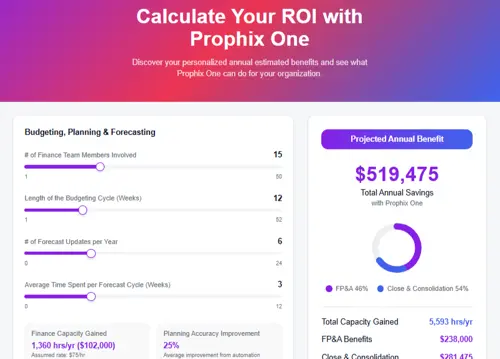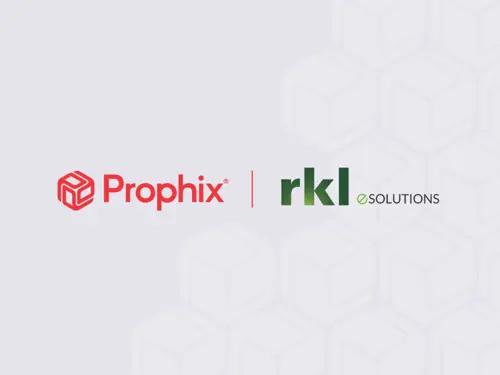Download Analyst Report
How to do balance sheet reconciliation in 2026 (definition & examples)
Balance sheet reconciliation helps in maintaining the integrity of a company's financial information, ensuring accurate financial reporting and aiding in the decision-making process.
January 3, 2025Mistakes were made.
Or at least, that’s what you’re trying to discover when doing balance sheet reconciliation. Growing organizations can go through dozens, if not hundreds of transactions daily, with each one presenting opportunity for error. Before balances from any of the accounts involved can be added to your balance sheet, they need to be reconciled.
Let’s take a look at balance sheet reconciliation in more detail. By the end of this article, you’ll know how to reconcile a balance sheet, best practices and examples, and answers to FAQs about balance sheet reconciliation.
What is a balance sheet reconciliation?
Balance sheet reconciliation is a crucial process in financial reporting where a company's financial records are compared with the numbers on its balance sheet to ensure accuracy. It involves identifying, explaining, and correcting any discrepancies. This process helps in maintaining the integrity of a company's financial information, ensuring accurate financial reporting and aiding in the decision-making process.
Why is it important to reconcile the balance sheet?
Balance sheets are essential for knowing where your organization stands financially. Additionally, balance sheet reconciliation:
- Ensures all transactions are accurate
- Gives you more confidence in your account balances
- Surfaces errors before they have downstream impact
- Creates a clear path for solving discrepancies
- Keeps your organization compliant with standards and regulations
- Creates documentation that can be referred to later
- Helps create a paper trail for future audits
When do you perform a balance sheet reconciliation?
Balance sheet reconciliation is typically performed in a similar timeframe as financial closes. That means you’ll typically perform monthly reconciliations that coincide with month-end closes, but some organizations will also reconcile balance sheets quarterly and annually.
Balance sheet reconciliation vs. bank reconciliation
Balance sheet reconciliation is the process of reviewing transactions on your overall balance sheet, while bank reconciliations focus specifically on bank statements and cash accounts. They’re almost identical processes, save for their scope and the type of transactions being reconciled.

How to reconcile the balance sheet
While balance sheet reconciliation can be time-consuming and labor-intensive, it doesn’t have to be complicated. Here’s a simple six-step process to follow.
1. Identify which accounts need to be reconciled
Depending on your industry and the way your organization operates, you may only need to reconcile some accounts as part of this process. For instance, another department may already be responsible for bank reconciliation, meaning including these accounts in your reconciliation would be doubling up on work.
2. Gather the necessary account and financial information
If you’re using a Financial Performance Platform like Prophix One, you’ll already have the data you need at your fingertips. Otherwise, you’ll need to access all accounts involved in your reconciliation to gather the necessary data.
3. Compare your information
Go through all transactions from the accounts represented on your balance sheet, comparing them to your supporting documentation. For example, when reconciling your accounts receivable ledger, you might compare transactions with invoices to identify discrepancies.
4. Investigate and explain the differences, if any
Identifying any errors in your general ledger (or GL) isn’t enough; you need to solve them! Sometimes, identifying and explaining the differences is as simple as spotting typos and similar data entry errors. Other times, you’ll need to investigate multiple systems to find the source of the error.
5. Adjust the GL and journal entries
After identifying and investigating errors, adjust the GL and any relevant journal entries to ensure account balances—and the resulting balance sheet—are accurate. Some software can help automate this part, saving your team precious time.
6. Document your findings
Leave a record of any investigation and the result, so controllers, auditors, and other professionals can track down any changes you’ve made. This can also help accelerate future reconciliations by identifying and documenting recurring issues.
Accelerate your close with collaborative account reconciliation.
Balance sheet reconciliation example
Here are some simple examples of what a balance sheet reconciliation might look like after your team has gone through the entire process.
Cash Reconciliation
Book Balance
Bank Statement
Beginning Balance
$10,000
$10,000
Add: Deposits in Transit
$2,000
$1,500
Less: Outstanding Checks
$2,500
$2,200
Adjusted Balance
$9,500
$9,300
End Balance (Book)
$9,300
End Balance (Bank)
$9,500
Difference
$200
Reconciled Balance
$9,300
Balance sheet reconciliation best practices
Now that you know how a balance sheet reconciliation is performed, here are some ways you can ensure this crucial process is performed with as little manual work as possible—and no risk of costly errors.
Automate where you can
Too many teams still rely on spreadsheets and manual work for most of their balance sheet reconciliation process. This not only takes time away from other essential tasks but can potentially introduce costly human errors. Ideally, your team should be using software that automates some of the most labor-intensive parts of the process, like transaction matching.
Use technology to improve your processes
Automation can help you save time, but the right technology can do a lot more; it helps you uncover inefficiencies and spot problems in your process. Whether you want to use built-in reconciliation features from enterprise resource planning software or leverage a dedicated solution, technology can turn this difficult process into something much more manageable.
Revisit risk assessment best practices
Risk assessment allows accountants, controllers, and other individuals within the Office of the CFO to predict some of the risks involved with financial decisions. Doing this can help identify potential issues prior to balance sheet reconciliation, giving teams a head start on identifying discrepancies. Reviewing your risk assessment process can save you a ton of effort come time to reconcile.
Establish clear policies and internal controls
The best way to make your balance sheet reconciliation process as effortless as possible is to prevent errors before they happen. To that end, make sure all policies involving financial transactions are absolutely clear and have internal controls in place to pick up on potential discrepancies before the next reconciliation effort.
Use a balance sheet reconciliation checklist
If checklists are good enough for pilots, astronauts, and surgeons, they’re good enough for the Office of the CFO. Turning your reconciliation process into a checklist can help prevent potential errors and streamline the entire effort.
Make balance sheet reconciliation effortless
Challenges associated with balance sheet reconciliation
Like many other financial processes, balance sheet reconciliation is difficult, time-intensive, and has the potential to be fraught with errors. Here are some challenges to watch out for as you work through your organization’s transactions.
Disconnected data and spreadsheets
One of the most time-consuming parts of reconciliation is centralizing all the data you need, both for your general ledger and the supporting documentation you’ll be comparing it against. That data will often be spread out over multiple tools and spreadsheets, and too often you’ll find transactions hidden in a tool that’s gone unused for months too late in the process.
Manual errors and data inaccuracies
The more manual processes are involved in your organization’s day-to-day transactions, the more opportunities are created for errors and inaccuracies. Since finding these and fixing them is the main purpose of reconciliation, organizations that rely heavily on manual work will find their reconciliations taking longer.
Lack of internal controls
When every department has its own method for managing these transactions, with few controls to standardize processes, you may have to go through inaccurate ledgers to prepare an accurate balance sheet.
How software can improve the balance sheet reconciliation process
You may have noticed a pattern.
Excessive reliance on manual processes and spreadsheets creates errors that add up to more work when it’s time to reconcile the balance sheet. That’s why having the right software is essential to optimizing the balance sheet reconciliation process. That’s because software:
- Standardizes balance sheet reconciliation to reduce the risk of human error
- Centralizes data from multiple sources with built-in integrations
- Automates the most time-consuming tasks involved with reconciliation, such as transaction matching
- Creates a record of any changes to the general ledger for smoother auditing and review
With the right software, you can complete balance sheet reconciliations in less time and with fewer errors, while setting up controls that prevent the discrepancies you’re checking for.
FAQs about balance sheet reconciliation
Balance sheet reconciliation can be a complex process, but no matter what your questions are, we have the answers.
Why do we only reconcile balance sheet accounts?
Balance sheet accounts are reconciled more frequently because they’re considered permanent (or continuous) accounts, meaning they carry balances over from one accounting period to the next. That means any errors that crop up will be carried over as well, making reconciliation even more important.
How often should you reconcile balance sheet accounts?
Balance sheet accounts are usually reconciled on a timeline that coincides with either the month-end close or less frequent financial close. That means they can be done as often as monthly but are usually done quarterly or yearly.
What are the 5 balance sheet assertions?
The five balance sheet assertions are used by auditors and financial analysts to evaluate the accuracy of what’s represented in a balance sheet. Here are these assertions:
- Existence: Does the reported asset, liability, or equity exist at the balance sheet date?
- Rights and obligations: Does the organization own or have the right to use reported assets? Does it have legal obligations for reported liabilities?
- Completeness: Are all relevant assets, liabilities, equity transactions, and balances included?
- Valuation or measurement: Do the amounts recorded in financial statements represent the true value of assets, liabilities, and equity?
- Presentation and disclosure: Is the information presented clear and understandable? Are all necessary disclosures made?
What is the role of balance sheet reconciliation in the financial close process?
Balance sheet reconciliation is an essential part of closing the books because it ensures that the Office of the CFO is working with accurate data. Otherwise, you might finalize your financial statements without accounting for errors that could skew the results significantly.
Make balance sheet reconciliation easy with finance software
Balance sheet reconciliation is a complex process that gives the Office of the CFO the numbers they need for month-end close and important financial statements. But there’s an easy way to eliminate the majority of the manual work involved while simplifying the entire process. Finance software makes balance sheet reconciliation a breeze. It centralizes all the data you need to reconcile, automates most of the work, and gives you the insights you need to prevent errors in the future.
Last updated November 2025
Experience how Prophix One™ Account Reconciliation transforms balance sheet reconciliation.





